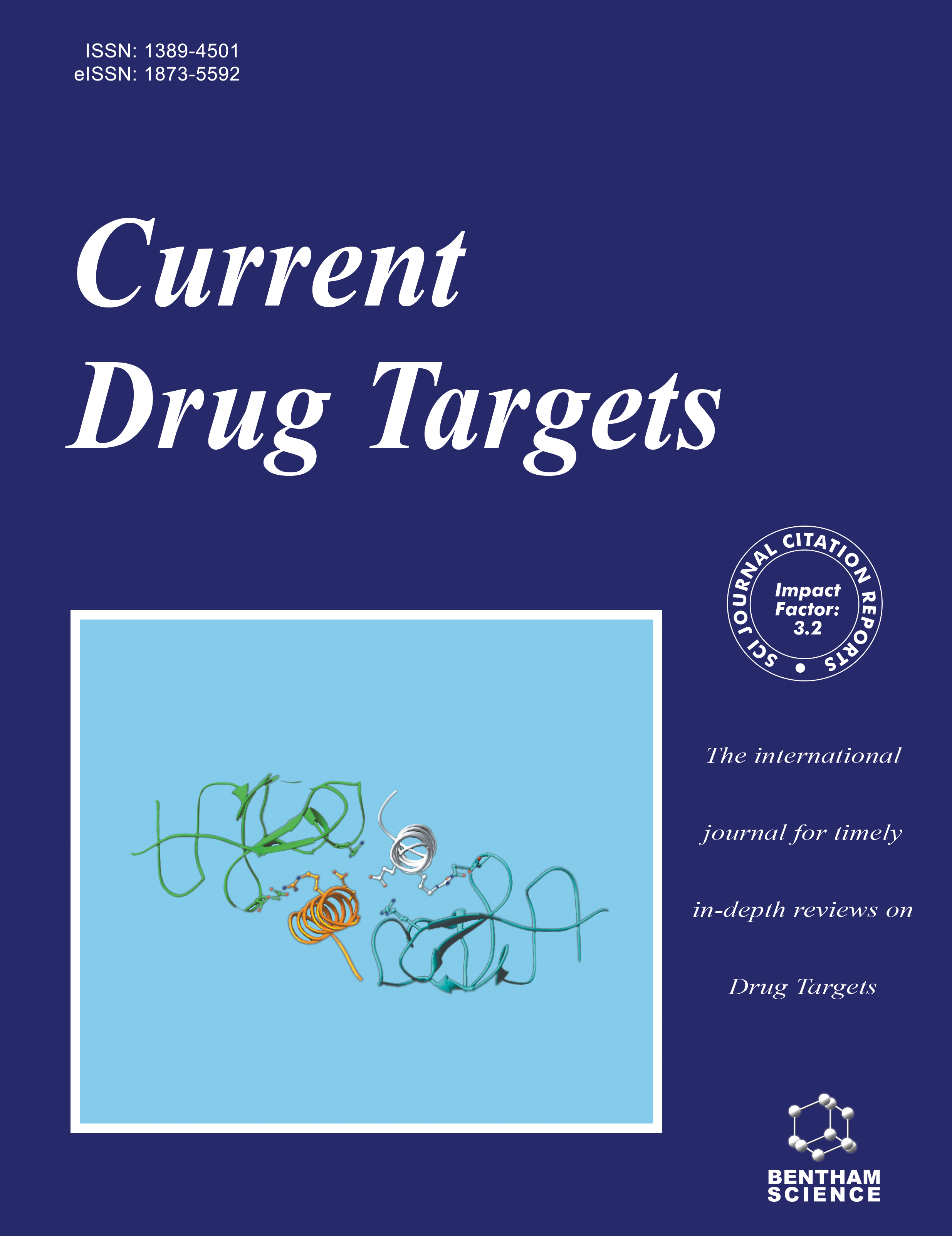- Home
- A-Z Publications
- Current Drug Targets
- Previous Issues
- Volume 18, Issue 16, 2017
Current Drug Targets - Volume 18, Issue 16, 2017
Volume 18, Issue 16, 2017
-
-
Antifungal Potential of Alkaloids As An Emerging Therapeutic Target
More LessAuthors: Haroon Khan, Mohammad S. Mubarak and Surriya AminBackground: Fungal infections have been causing serious problems in all age groups, especially in immune-compromised individuals. Various synthetic agents are in clinical practice for the treatment of these infections, however, resistance to these agents badly affected their therapeutic quality. Objective: This review focuses on the antifungal activity of naturally occurring alkaloids, their source, chemical structure, and pot Read More
-
-
-
PHB in Cardiovascular and Other Diseases: Present Knowledge and Implications
More LessBackground: Prohibitin (PHB) is overtly conserved evolutionarily and ubiquitously expressed protein with pleiotropic functions in diverse cellular compartments. However, regulation and function of these proteins in different cells, tissues and in various diseases is different as evidenced by expression of these proteins which is found to be reduced in heart diseases, kidney diseases, lung disease, Crohn's disease and ulcerativ Read More
-
-
-
Stroke Risk Stratification Schemes in Atrial Fibrillation in the Era of Non- Vitamin K Anticoagulants: Misleading and Obsolete, At Least for the “Low-Risk” Patients?
More LessAuthors: Antonis S. Manolis, Theodora A. Manolis, Antonis A. Manolis and Helen MelitaBackground: The thromboembolic risk of atrial fibrillation (AF) is significantly mitigated by oral anticoagulation (OAC) therapy, albeit at an increasing bleeding risk. The general principle is that the potential harm conferred by possible bleeding must not exceed the expected protective benefit of OAC. Over the recent years, the CHA2DS2-VASc score has been proven to be superior to other scores in identifying ‘low risk’ Read More
-
-
-
Nanotechnology As Potential Tool for siRNA Delivery in Parkinson's Disease
More LessBackground: The lack of an outright treatment for Parkinson’s disease (PD) is a pivotal concern in medicine and has driven the search for novel alternatives for treating the disease. Among the proposed approaches, small interfering RNA (siRNA)-based therapy is attracting significant attention as a potential method for the treatment of PD; however, siRNAs delivery possesses potential drawbacks, such as reduced stabi Read More
-
-
-
The Emerging Role of the Hippo Pathway in Lung Cancers: Clinical Implications
More LessAuthors: Seong Lin Teoh and Srijit DasBackground: The incidence of lung cancers has increased globally. Increased exposure to tobacco, passive smoking, less consumption of vegetables and fruits and occupational exposure to asbestos, arsenic and chromium are the main risk factors. The pathophysiology of lung cancer is complex and not well understood. Various microRNAs, genes and pathways are associated with lung cancers. The genes involved in lu Read More
-
-
-
Radiosensitizing Effect of Electrochemotherapy: A Systematic Review of Protocols and Efficiency
More LessAuthors: Zohre Rezaee, Ali Yadollahpour, Samaneh Rashidi and Pramod S. KunwarBackground: Electrochemotherapy (ECT) is a combination of electroporation (EP) and chemotherapy and has been reported as a potential radiosensitizing agent for radiation therapy. Objective: The main objective of this study was to systematically review of the literature to evaluate the effectiveness of ECT in sensitization of tumors to ionization radiation. In addition, the clinical considerations and mechanisms of action of Read More
-
-
-
Cell Wall Associated Factors of Mycobacterium tuberculosis as Major Virulence Determinants: Current Perspectives in Drugs Discovery and Design
More LessAuthors: Gurdyal Singh, Arbind Kumar, Pratibha Maan and Jagdeep KaurBackground: Mycobacteria genus is responsible for deadly diseases like tuberculosis and leprosy. Cell wall of bacteria belonging to this genus is unique in many ways. It plays a major role in the pathogenesis and intracellular survival inside the host. In intracellular pathogens, their cell wall acts as molecular shield and interacts with host cell milieu to modulate host defense responses. Objectives: In this review, we summariz Read More
-
Volumes & issues
-
Volume 26 (2025)
-
Volume 25 (2024)
-
Volume 24 (2023)
-
Volume 23 (2022)
-
Volume 22 (2021)
-
Volume 21 (2020)
-
Volume 20 (2019)
-
Volume 19 (2018)
-
Volume 18 (2017)
-
Volume 17 (2016)
-
Volume 16 (2015)
-
Volume 15 (2014)
-
Volume 14 (2013)
-
Volume 13 (2012)
-
Volume 12 (2011)
-
Volume 11 (2010)
-
Volume 10 (2009)
-
Volume 9 (2008)
-
Volume 8 (2007)
-
Volume 7 (2006)
-
Volume 6 (2005)
-
Volume 5 (2004)
-
Volume 4 (2003)
-
Volume 3 (2002)
-
Volume 2 (2001)
-
Volume 1 (2000)
Most Read This Month
Article
content/journals/cdt
Journal
10
5
false
en


